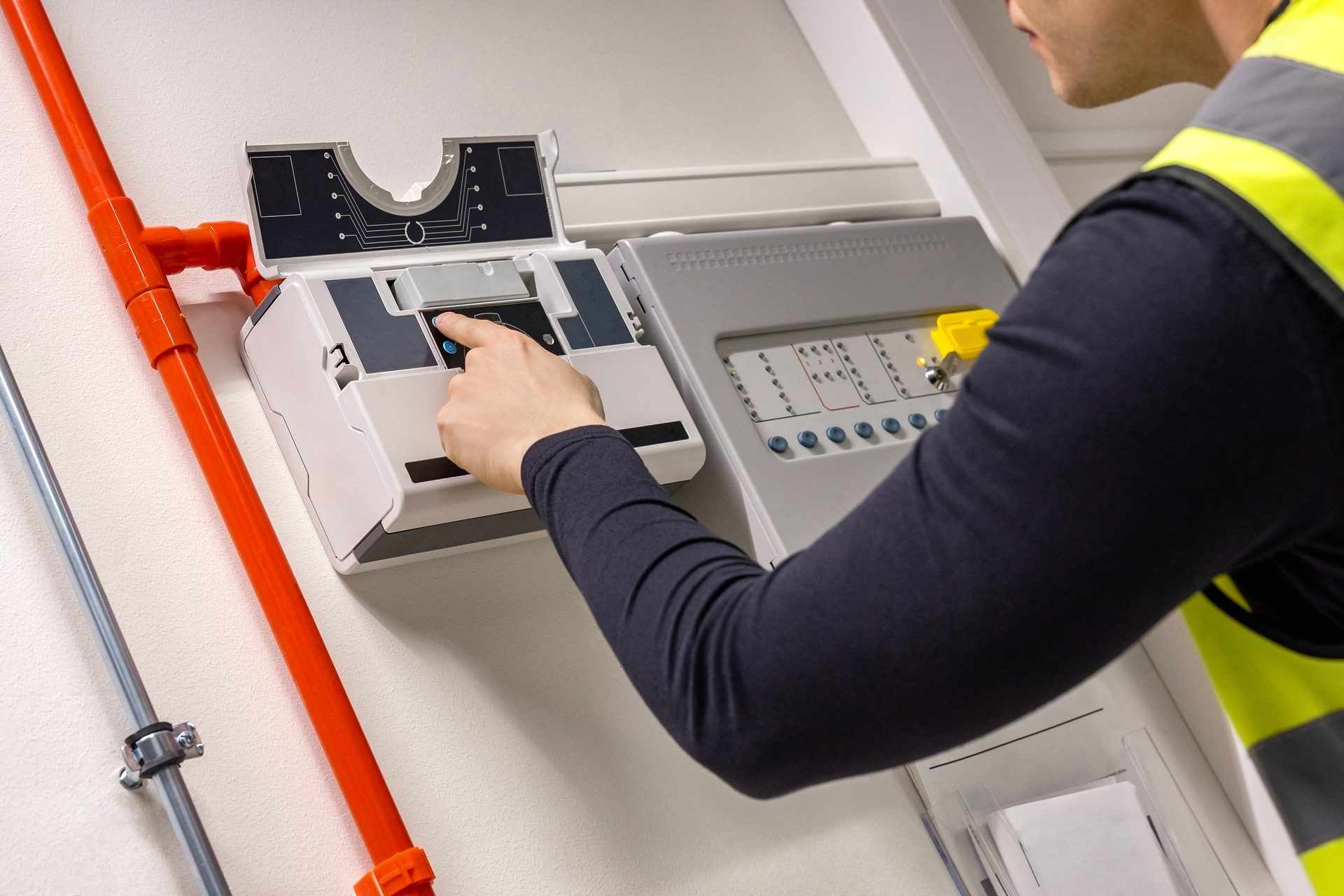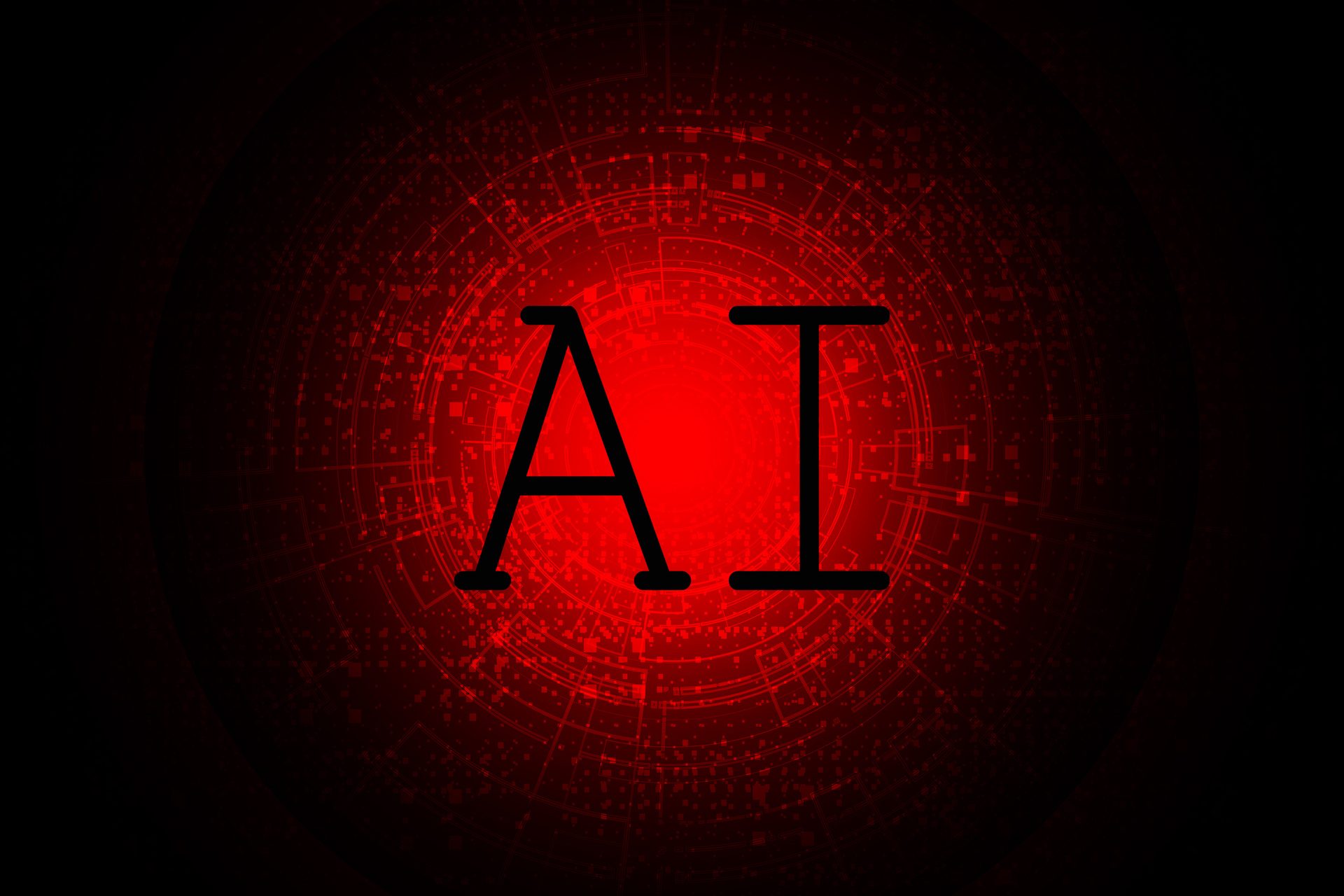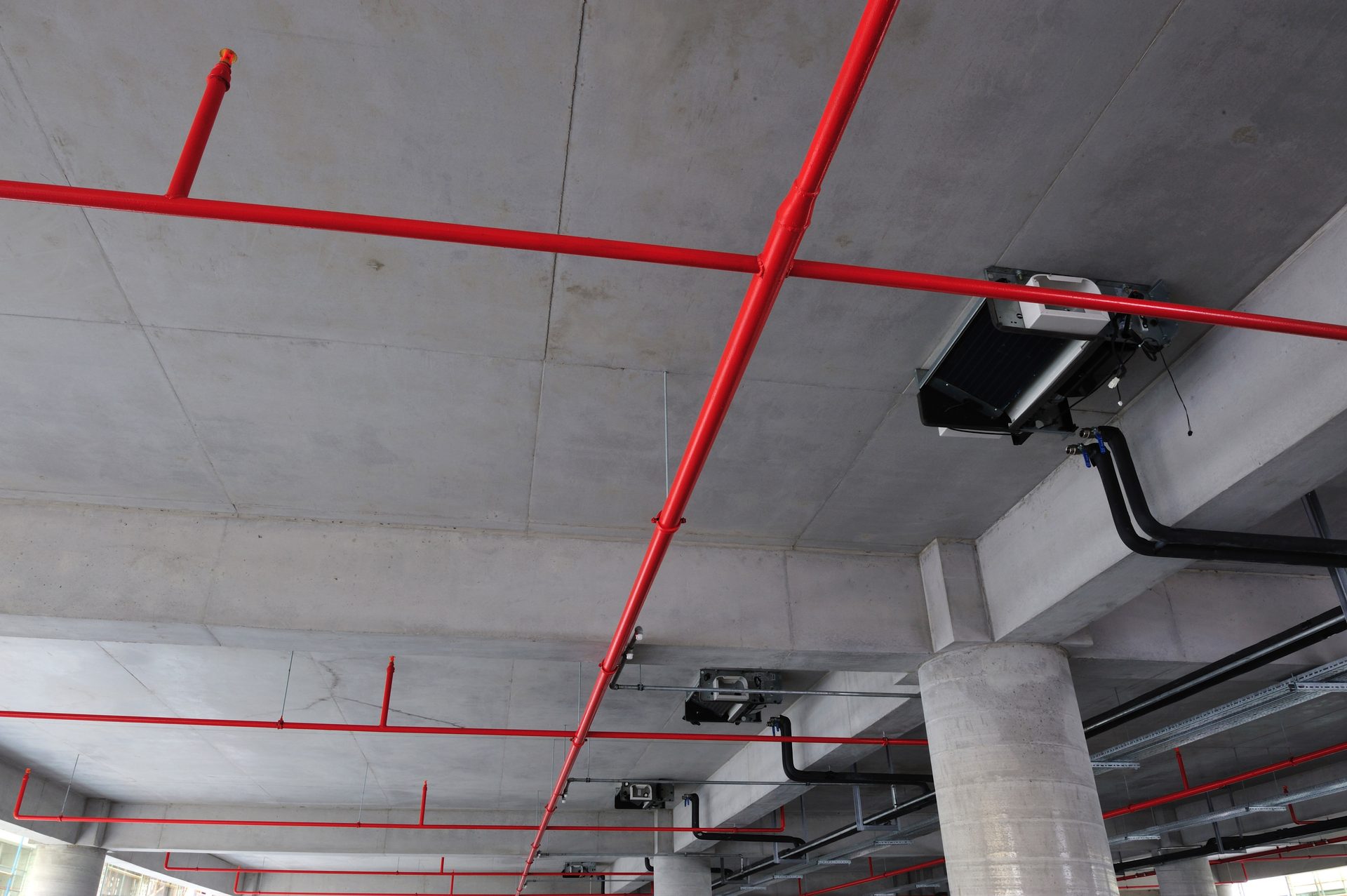april 2025
// Life Safety & Fire Alarm
Smart Fire Safety in Smart Buildings
Experts weigh in on how smart building technology is improving communication, efficiency and data gathering to provide a more precise and transparent view of a structures fire safety.
By Christopher Crumley, SDM Associate Editor

Smart building data — gathered through smarter sensors — can even improve the safety of first responders by giving them more information on exactly what they’re responding to. kjekol / iStock / Getty Images Plus / Image courtesy of GettyImages
SHARE
Smart buildings can drive efficiency and safety by providing a more integrated and connected overview of the premises. A key component to a building’s safety — and the safety of its occupants — is the structure’s fire safety system. But how has the evolution of smart building technology affected life safety and fire alarm systems? Ahead, experts dive deeper into the capabilities of modern smart buildings and the specific ways that improves fire safety for the property and its inhabitants.
“Building automation allows for a much more integrated and controlled approach when it comes to fire safety,” says Susheel Tenguria, general manager, life & safety, Honeywell, Charlotte, N.C. “In smart buildings, an advanced fire system is designed to be scalable, secure and efficient with access to real-time building information — whether that’s data on how equipment is functioning or other critical information for compliance reporting. They are also equipped with advanced detection, which means early response to any incidents that might occur as these systems get connected to core fire systems.”
The Smart Building Approach
With a smart building, odds are the organization occupying the structure is already especially tech-minded — altering the approach to fire safety. Daniel Rosales, senior director, marketing, PLM, & tech services, Telguard, Atlanta, says, “The approach to fire safety is quite different in smart buildings. Rather than dealing with premises that are protected using communication technologies like POTS (plain old telephone service), most smart buildings have already embraced technology as a way to do things better, faster, more efficiently, and more accurately. This simple fact should make it easier for new technologies in fire safety to be more readily adopted.”
There are features in fire alarm systems that offer opportunities for the system to really integrate with a smart building and vendors that are in touch and in tune with that have an opportunity to provide value-add to the client.
— Gregory R. Breyer, Zeus Fire and Security

Modern smart buildings utilizing AI analytics can identify fire safety concerns before an event transpires. kraisorn waipongsri / iStock / Getty Images Plus / Image courtesy of GettyImages
Adoption in fire safety is a long-standing issue because it’s most often not attractive beyond what’s required. As Gregory R. Breyer, director, fire business development, Zeus Fire and Security, Paoli, Pa., highlights, “People don’t usually put in a fire alarm system because they want to. It’s a code-driven system. People put in security systems usually because it’s something that they want — it’s desired. From a smart building perspective, I would say there’s more technological advancement in that space. There are features in fire alarm systems that offer opportunities for the system to really integrate with a smart building and vendors that are in touch and in tune with that have an opportunity to provide value-add to the client.”
In a market where users are often interested in only what’s required, smart building technology provides an opening to present a fire system’s full capabilities. “The conversation about innovative technology has become easier,” Rosales adds. “Not only from an integrator’s perspective. And not only does it help the conversation shift from what’s the minimum requirement to what technologies can be used to make fire safety smarter, but the propagation of smart buildings is also pushing manufacturers to look at ways to provide devices and services that go beyond what meets code and into the realm of doing seemingly simple tasks better.”
Improved Communication
So what can smart building technology improve for fire safety? The increased transparency, access to real-time data and improved efficiency are all thanks to the improvements in communication. “The system is something that’s required, but those systems can do a lot more,” Breyer says. “They may not be required to do more, but they can do a lot more. I really want to highlight communication. When we look at life safety, when there’s a problem, communication plays a critical part. And unfortunately, what I’ve found in my experience is that a lot of times when we have an incident we identify that the reason that there was loss of property and life was the result of poor communication. And I think with smart buildings, we have an opportunity to increase and enhance communication.”
Remote Testing
Modern smart buildings do allow for remote testing, but there’s a catch: fire code requires a qualified individual to be on site to test the system. “Yes, users can have remote visibility of the system, including the ability to conduct remote testing,” says Susheel Tenguria of Honeywell. “However, to ensure proper compliance, a thorough, in-person assessment should always be conducted as part of any safety protocols.”
Kenny Klusman, Pye-Barker, adds, “Yes, we can. Regular inspections are still done in person, but innovations in technology allow a technician to diagnose issues without being on site. Troubleshooting is half the battle and being able to diagnose in advance and communicate proactively enhances the customer experience. Actual repairs or changes to systems still need to be made onsite by a certified technician.”
And the experts have indicated that users often wonder if that makes remote testing valuable? Gregory R. Breyer, Zeus Fire and Security, says yes. “We’re able to do self-testing. You may say to me, ‘If it’s able to perform self-testing, but you still have to have someone on site, is there really value in that?’ And the answer is absolutely, because it significantly reduces the time and the impact on the operations of the business and the labor that goes into a full inspected test.”

Smart sensors can detect where in a building smoke has been found. SB-8NIHAT / E+ / Image courtesy of GettyImages
More Precise Data
Communication throughout the entire process can be streamlined in a smart building setting, but what about the data the system is gathering? Improvements in the individual components — driven by technologies like artificial intelligence — are increasing the precision and accuracy of information about fire events. “Automated emergency response, real-time monitoring and advanced evacuation processes are all a great complement to existing and new fire safety technologies,” Klusman says. “The industry and manufacturers have launched some amazing products that continue to improve with the introduction of AI. Our focus is to make sure we can pinpoint the fire and evacuate all the occupants safely.
Traditionally, fire safety systems work with a structure’s HVAC to stop the spread of smoke that would fuel fires. Klusman continues, “Newer technologies include heat mapping cameras and smart smoke detectors, which can tell us the exact location of the fire and evacuate the occupants accordingly. Analytics can be used to identify potential fire risks to create a proactive maintenance approach to ensure facility managers can address any potential issues.”
All of this culminates in a safer system. “Smart building technology has enhanced fire safety by offering the opportunity to layer in preventative strategies with proactive detection,” Klusman says. “Traditional fire safety has been reactive in nature. By connecting all available systems, we can leverage those technologies to offer a faster response to an emergency. Early detection, intervention and suppression are key to saving lives and property.”
Breyer offers the following reminder when operating in the smart building space. “When we install a fire alarm system, we’re not necessarily installing a smart building solution,” he says. “We’re installing a fire alarm system, but we have the opportunity to provide smart building components of the system and to interface with those that are being provided by others.”
Rosales reiterates that the smart building customer is one who is ready for what’s next. Their tech-forward attitude can be leveraged to ensure that the user is getting the most efficient and precise solution. “Embrace innovative technology,” he says. “Property owners that have already invested in smart systems have a mindset of seeking efficiencies and value through technology. Do not be shy to present the latest technologies and services that are available to you. Because fire safety usually evolves at a slower, more careful pace, chances are that a smart building owner is ready to embrace what you have to offer and actually ask for more.”
Navigating Complexities
Inside fire safety as a whole, complying to code — both regional and local — can be quite complex. “Understandably, there are a lot of regulations around the maintenance and operation of fire and life safety systems, so it is critical to ensure any new solutions closely align with these regulatory standards,” Susheel Tenguria, Honeywell, says. Staying up-to-date with these is paramount to success in the vertical.
Additionally important in the smart building space is a solution’s ability to integrate the larger system. “The biggest challenge is integrating all the different technology platforms,” Pye-Barker’s Kenny Klusman says. “Like any technological integration, compatibility can start as a small problem and manifest into a much larger one if the project is not designed properly. The key to success is selecting a knowledgeable partner with the experience necessary to navigate and integrate both old and newer technologies.”
SHARE

